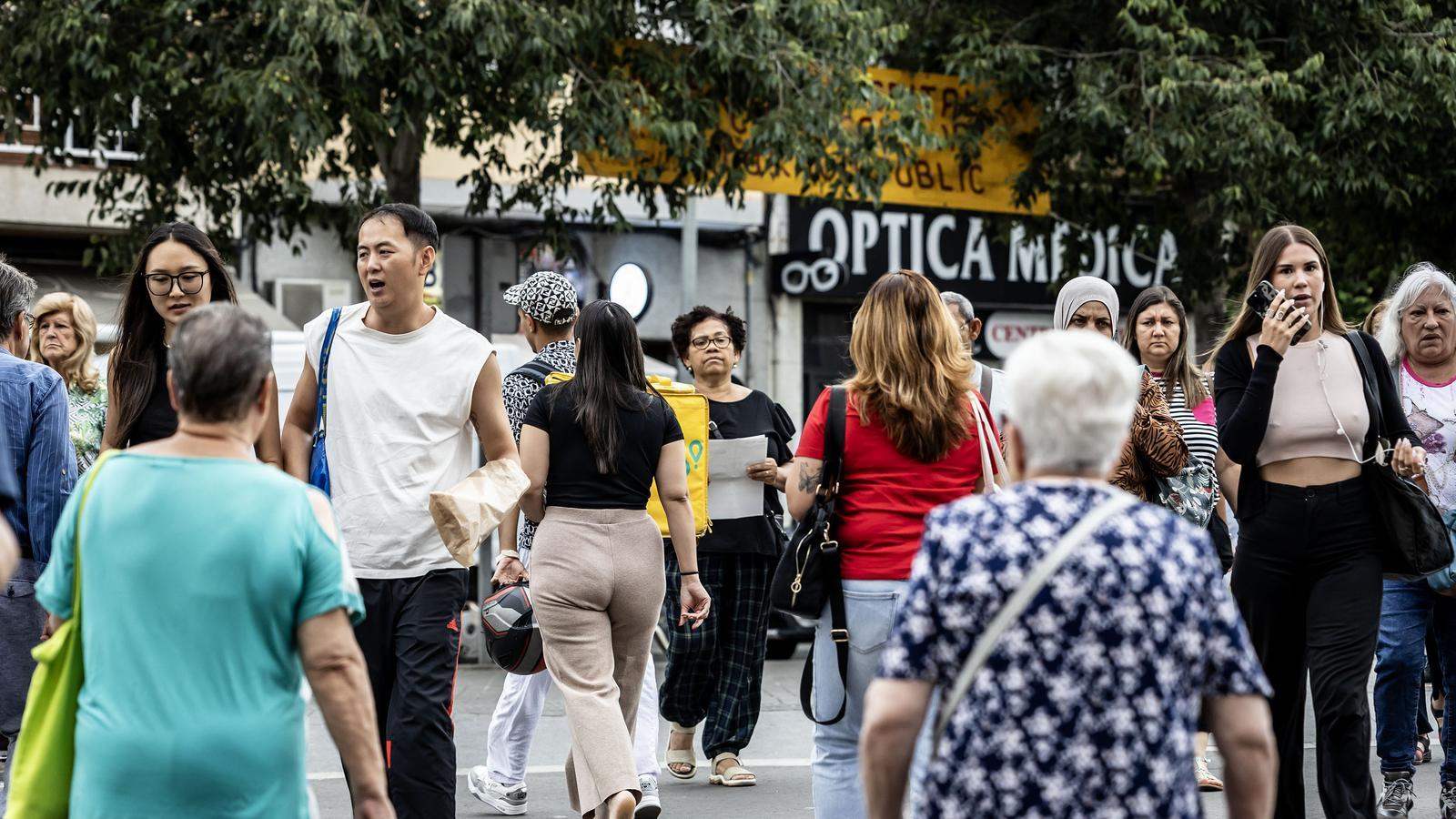"With what I've bought a house here, I wouldn't even be able to buy a door in Barcelona."
Thousands of Barcelona residents settle in municipalities of Penedès and Tarragonès


Calafell"There are citizens who reproach me for thinking of the town as if it were a big city," explains the mayor of Calafell, Ramon Ferré, with displeasure. And he justifies his claim: "The truth is that we've grown a lot in a short time, and in some cases, we still have a village mentality." The mayor must face these reproaches, for example, when he tries to explain to citizens that they have to pay to park in the beach area, a part of the city that is completely overcrowded and where without a blue zone it would be impossible to find a place to leave your car because there would be no turnover. The unpopular measure cannot be reversed: "But we've already surpassed Salou!" says Ferré.
The reality is that Calafell has consistently appeared on the podium of fastest-growing cities for eight years. The demographic change began in the 1990s, with the arrival of the commuter train and the C-32 motorway, but since 2000 it has broken all the statistics. From 2000 to 2023, Calafell's population had grown by 150%. And in the last ten years alone, it has gone from 24,333 inhabitants to 31,567, almost 30% more, according to census data. However, household water consumption allows us to determine whether the taps are turned on every day or only on weekends, and the data indicates that, in reality, more than 50,000 people live in Calafell, as the mayor explains.
All this growth has happened without hardly any new housing being built. Second homes have simply become places to live. María is part of the first big wave. Twenty years ago, she left Badalona and came to live with her husband in the second home her father-in-law had built in Mas Romeu, one of Calafell's many residential developments. "There was nothing here," she says. In recent years, he says, "everything has come," especially people from the Barcelona metropolitan area.
One of the new residents is Alfonso Estepa, 35, who lives in the development itself. "I came from Sant Adrià two and a half years ago," he explains. "And with what I've bought a house here, I can't even buy a door in Barcelona," he says. Single-family homes cost 90,000 euros nearly 15 years ago. They rose to 120,000 euros after the pandemic, and now prices below 150,000 euros are hard to find. Homes with parking are around 220,000 euros. Like everything, there's also the downside. "We left the job we had because we hoped to find work here... but I had to go back to the job I had before," he explains. A warehouse worker earns around 2,500 euros a month in the Barcelona metropolitan area, but there he doesn't even make 1,000 euros, he laments. He also had trouble adapting. "Winter here is very sad... everyone goes home from work," he says. At first, he really missed his friends and "neighborhood life," which allows you to leave the house without any destination and always find something to live in. "Everything has to be calculated here, and we only have one bar... But now I've adapted and wouldn't change it for anything in the world," he says.
One of Alfonso's neighbors is Verónica Illescas, who left El Prat de Llobregat almost 20 years ago. She works at a real estate agency that primarily sells chalets and apartments in Calafell that were previously second homes, but now buyers want the property to move in. "Look, we have a client who just bought a loft with a balcony overlooking the sea and she pays less on the mortgage than she paid in Barcelona to rent a room." According to Illescas, there is also another type of buyer, especially French and German, who are also looking for houses but will continue to have them as second homes.
The population increase of more than 29% in Calafell in just ten years is similar to that of other nearby municipalities, such as Cunit (31%) and Roda de Berà (27%). Torredembarra (16%) is also growing, although not as much.
Unregistered residents
"We've become a large town or a small city," explains Torrens mayor Vale Pino, who points out that behind this increase are also many people who are moving to where they previously had second homes. The increase began to be noticed following the Copido and hasn't stopped. In ten years, the number has reached 17,953 citizens, but in reality, there are many more inhabitants who have yet to register. These are mainly elderly people who don't want to change their census so as not to lose the specialist doctor they've had all their lives.
This phenomenon, which affects many other municipalities that are absorbing population from the Barcelona metropolitan area, is a significant problem because all public contributions are based on the number of inhabitants. The subsidies provided by the Generalitat (Catalan Government) and the State depend on the population, and public services such as primary care centers and music schools are also based on the census. And these subsidies skyrocket when the population reaches 20,000. Torredembarra, which is 2,000 citizens away from reaching that figure, is promoting a registration campaign. Like the mayor of Calafell, he has had to expand the paid parking area. In Torredembarra, an hour of parking costs 75 cents, and in Calafell, one euro.


